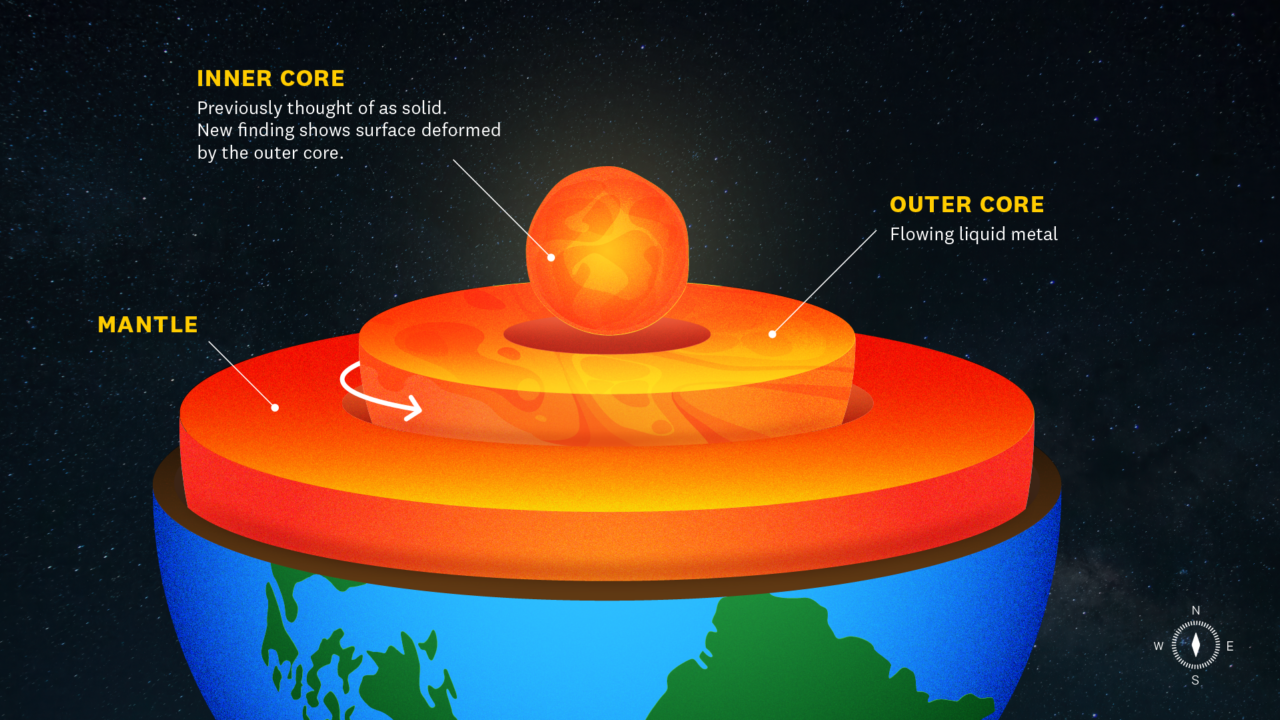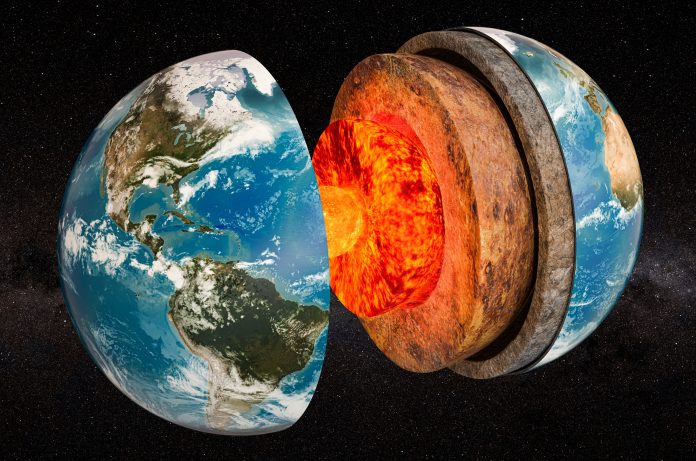Deep within Earth, a hidden transformation is underway. Scientists have discovered that the inner core’s surface is changing shape, challenging previous assumptions about its solid nature. This dynamic activity could influence Earth’s rotation and magnetic field
Deep within the Earth, a dramatic transformation is underway. A new study from the University of Southern California (USC), published in Nature Geoscience, has revealed evidence of significant structural changes occurring near the surface of Earth’s inner core.
This discovery challenges previous assumptions about the inner core’s composition and opens new avenues for understanding the planet’s dynamics, including its rotation, magnetic field, and thermal history. The findings suggest that the inner core, previously thought to be a solid sphere, is far more dynamic and susceptible to change than previously imagined.

Redefining the Earth’s inner core
Located approximately 3,000 miles below the Earth’s surface, the inner core resides within the molten liquid outer core. Until now, it was largely considered a solid sphere. The USC research team initially focused on charting the slowing of the inner core’s rotation, stumbled upon this groundbreaking discovery while analysing decades of seismic data.
John Vidale, Dean’s Professor of Earth Sciences at USC Dornsife and the study’s principal investigator, explained that the research wasn’t intended to define the physical nature of the inner core. Instead, the analysis of seismic waveforms revealed unexpected properties, indicating that the inner core’s near-surface is undergoing structural changes.
Unveiling the evidence
The study utilised seismic waveform data from 121 repeating earthquakes near Antarctica’s South Sandwich Islands between 1991 and 2024. These repeating earthquakes provided a unique opportunity to probe the inner core’s structure.
The researchers analysed the waveforms received at stations near Fairbanks, Alaska, and Yellowknife, Canada. A particular dataset from the Yellowknife station displayed unusual characteristics that stood out from the rest. Initially perplexing, these anomalies eventually revealed themselves as evidence of previously unknown activity within the inner core.
A deformed inner core
The observed physical activity suggests that the earth’s inner core’s near-surface is undergoing viscous deformation, meaning it’s changing shape and shifting at its shallow boundary. This deformation indicates a dynamic interaction between the inner and outer core. The turbulent molten outer core, long known to exist, is now observed to be disrupting its solid neighbour on a human timescale.
Vidale explained that this interaction, likely the primary cause of the structural changes, had not been observed before and provided a new understanding of the forces at play deep within the Earth.
Implications and future research
This discovery has significant implications for our understanding of Earth’s dynamics. The changing shape of the inner core could play a role in the subtle variations in the Earth’s rotation, which minutely alter the length of a day. Furthermore, the interaction between the inner and outer core could provide valuable insights into the generation and maintenance of Earth’s magnetic field and its thermal evolution.
The research opens a new window into the previously hidden dynamics of Earth’s core and sets the stage for future studies to explore these complex processes further. The USC team’s findings highlight the dynamic nature of our planet’s interior and underscore the importance of continued research to unlock the remaining mysteries hidden within the Earth’s core.
This discovery not only redefines our understanding of the Earth’s inner core but also emphasises the interconnectedness of Earth’s various layers and their profound influence on the planet as a whole.











